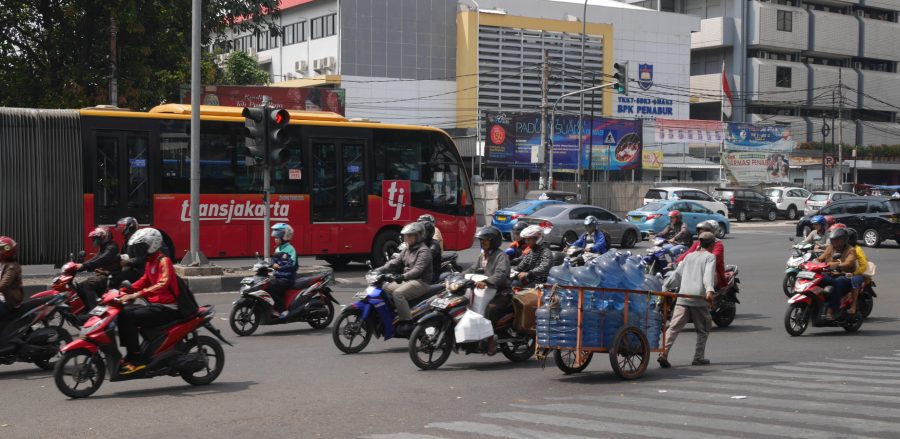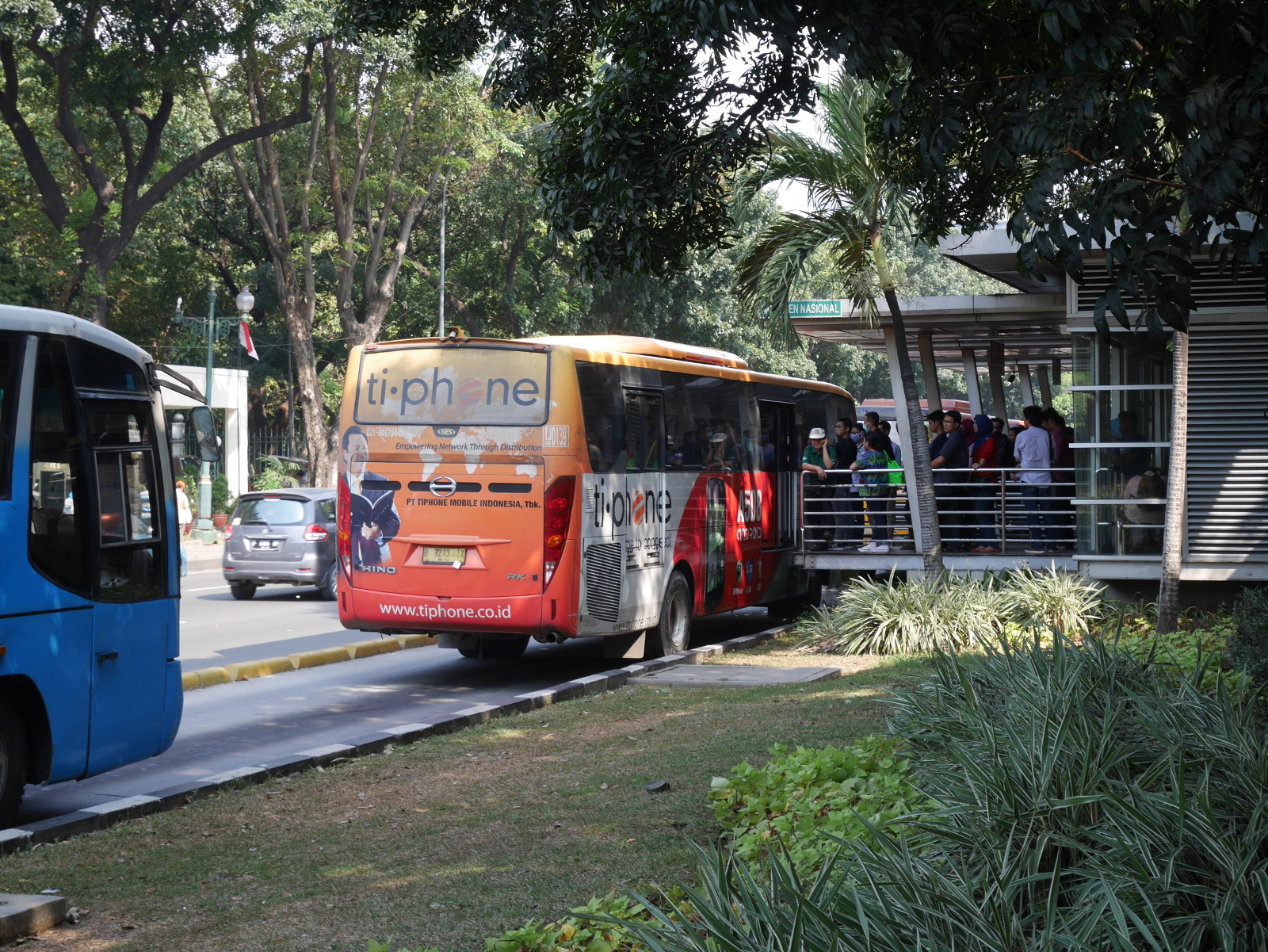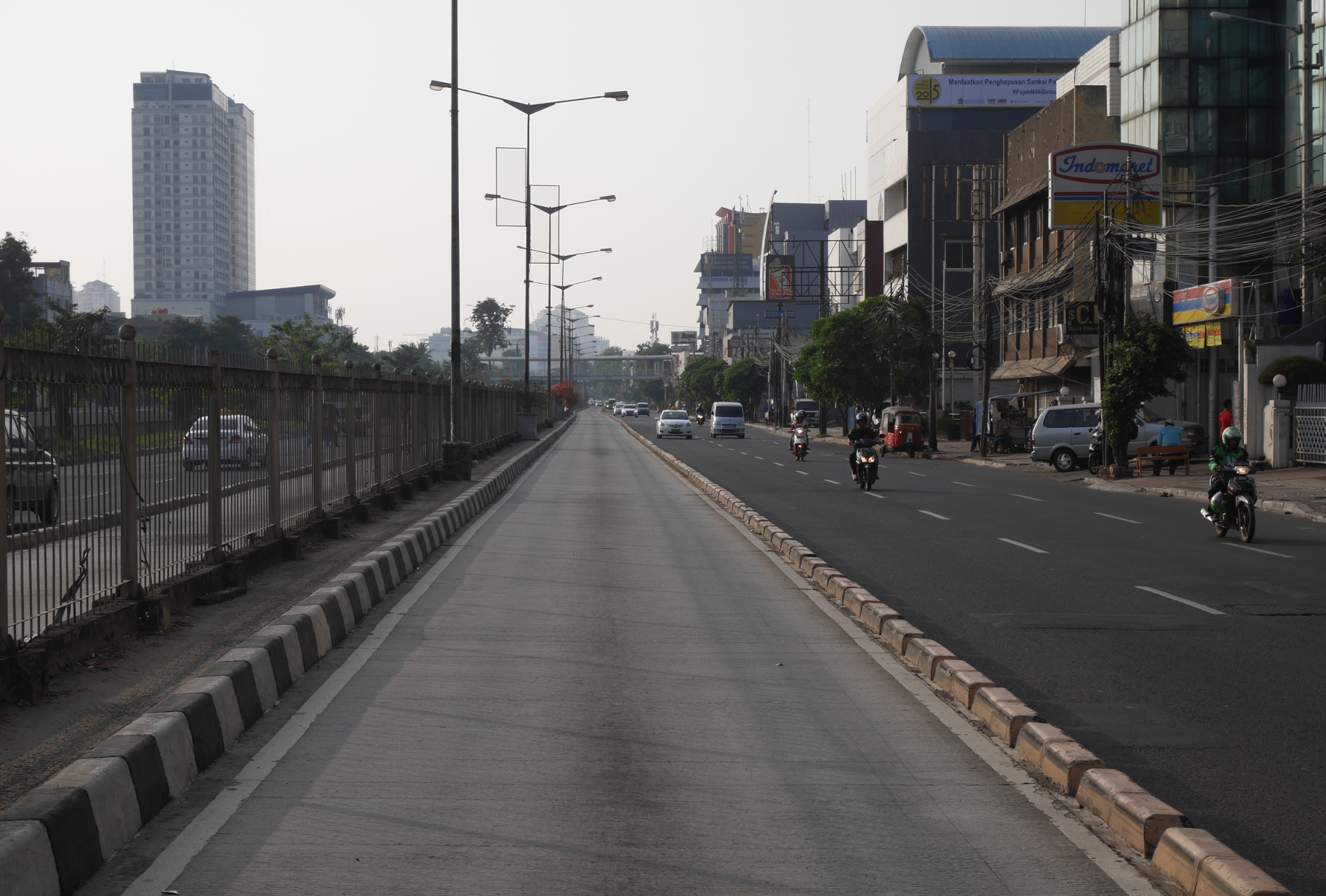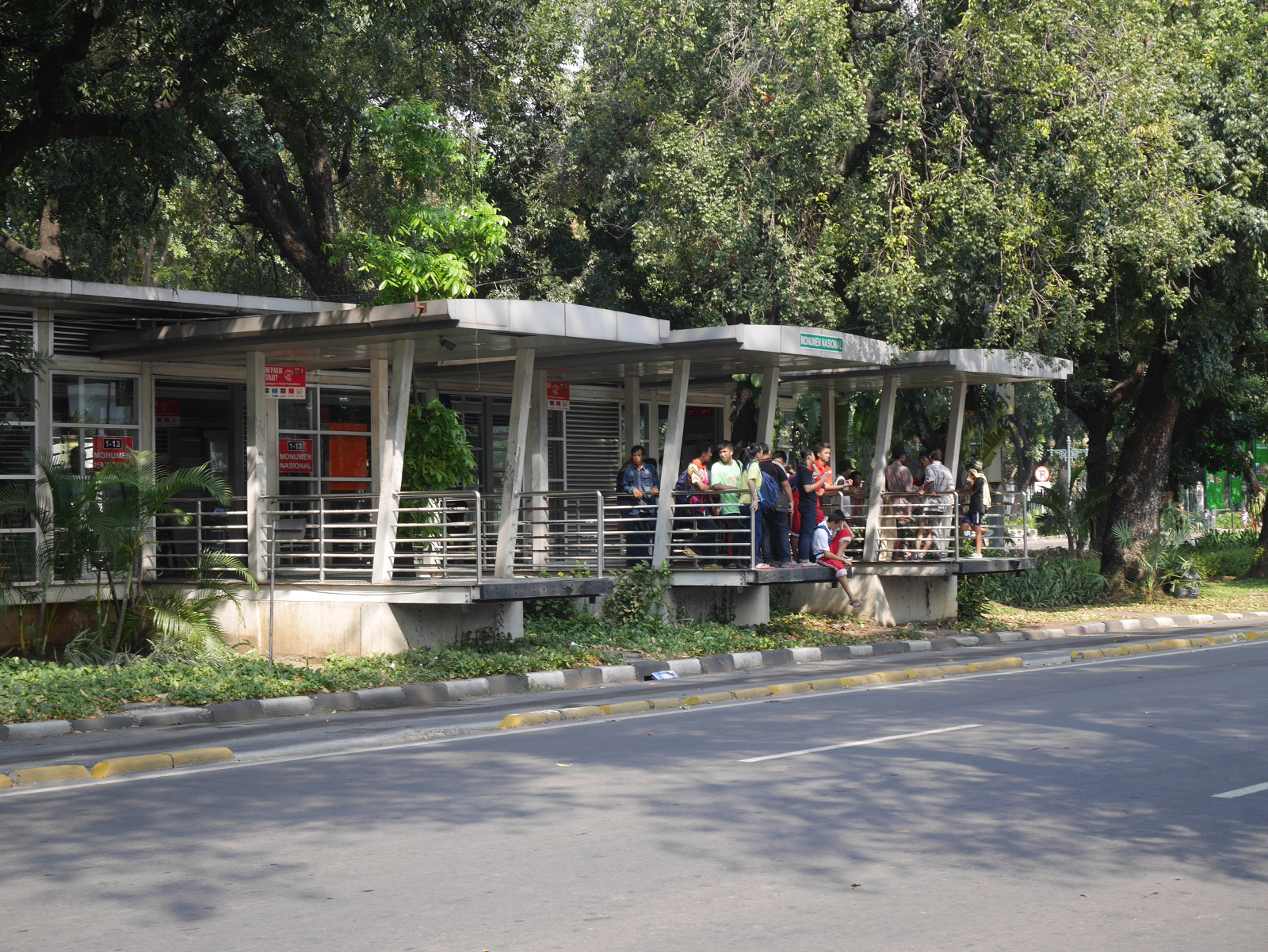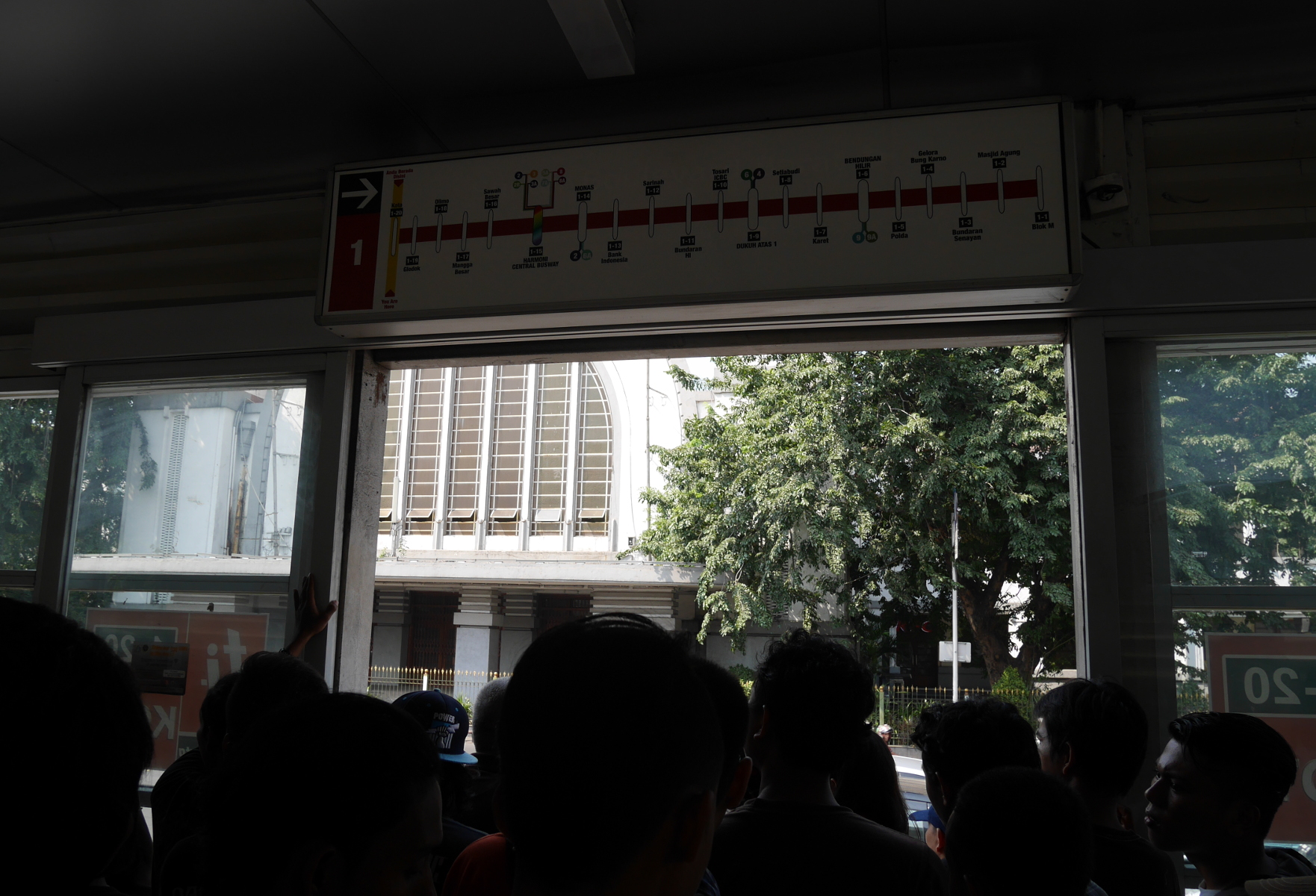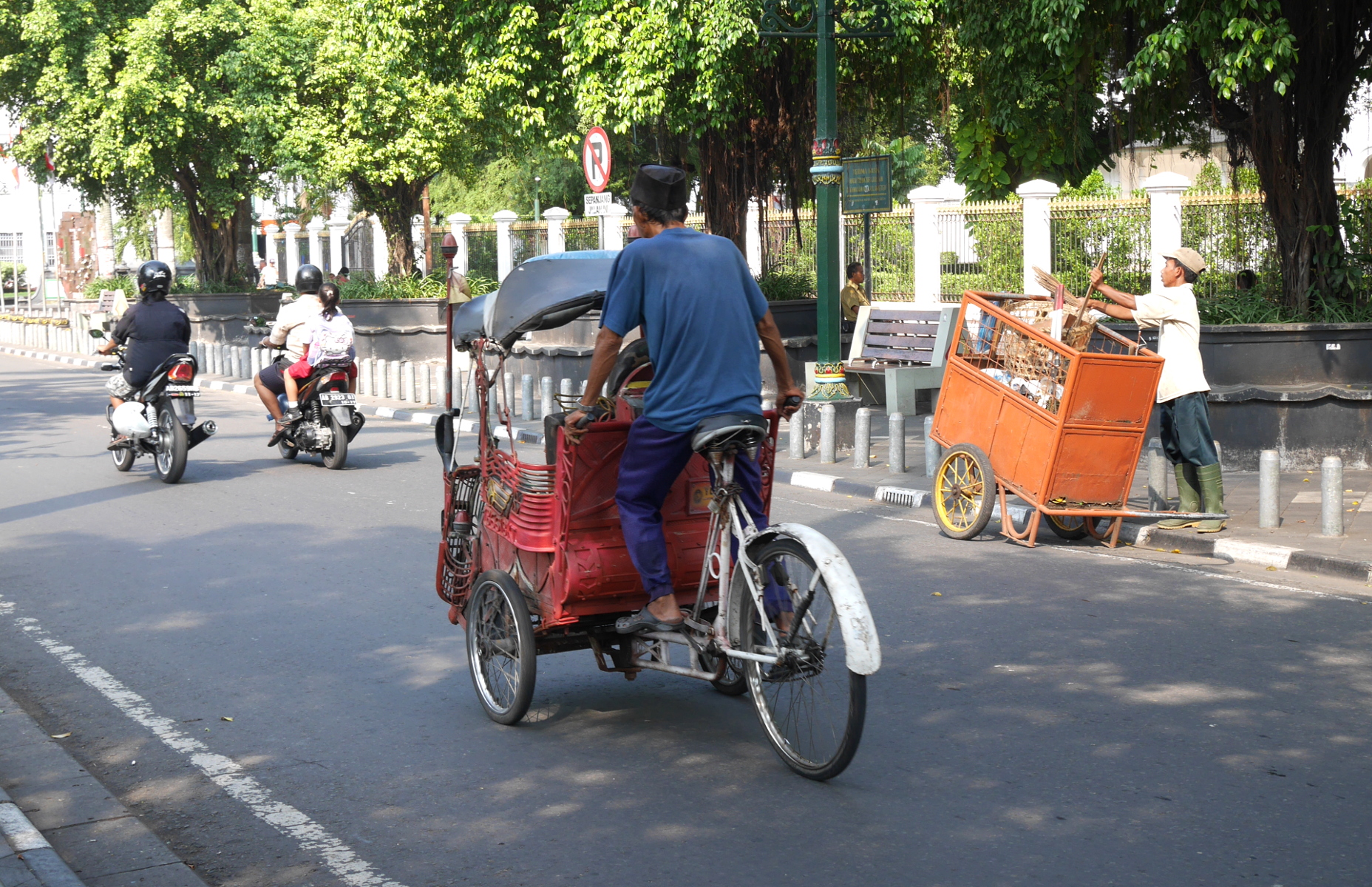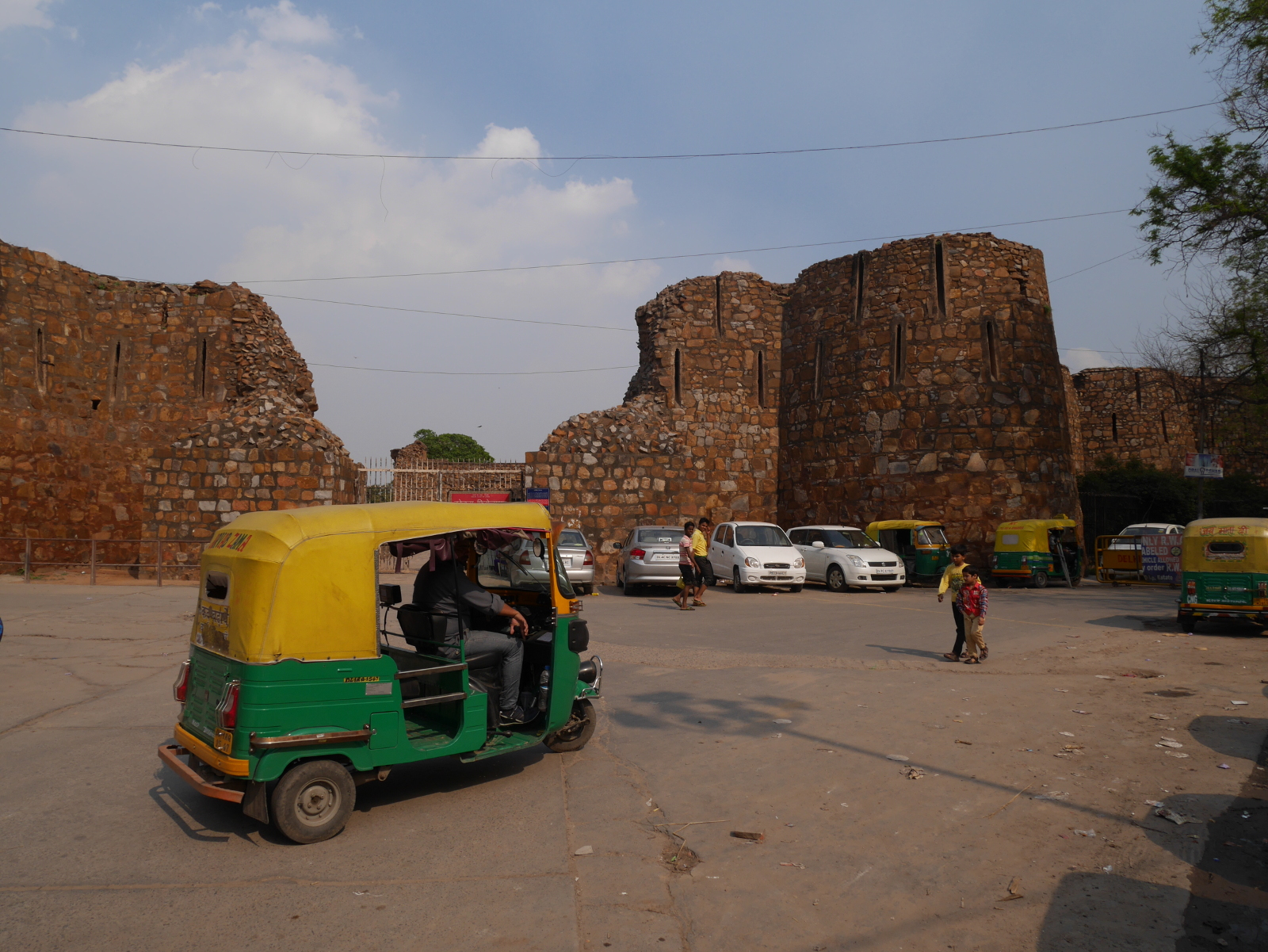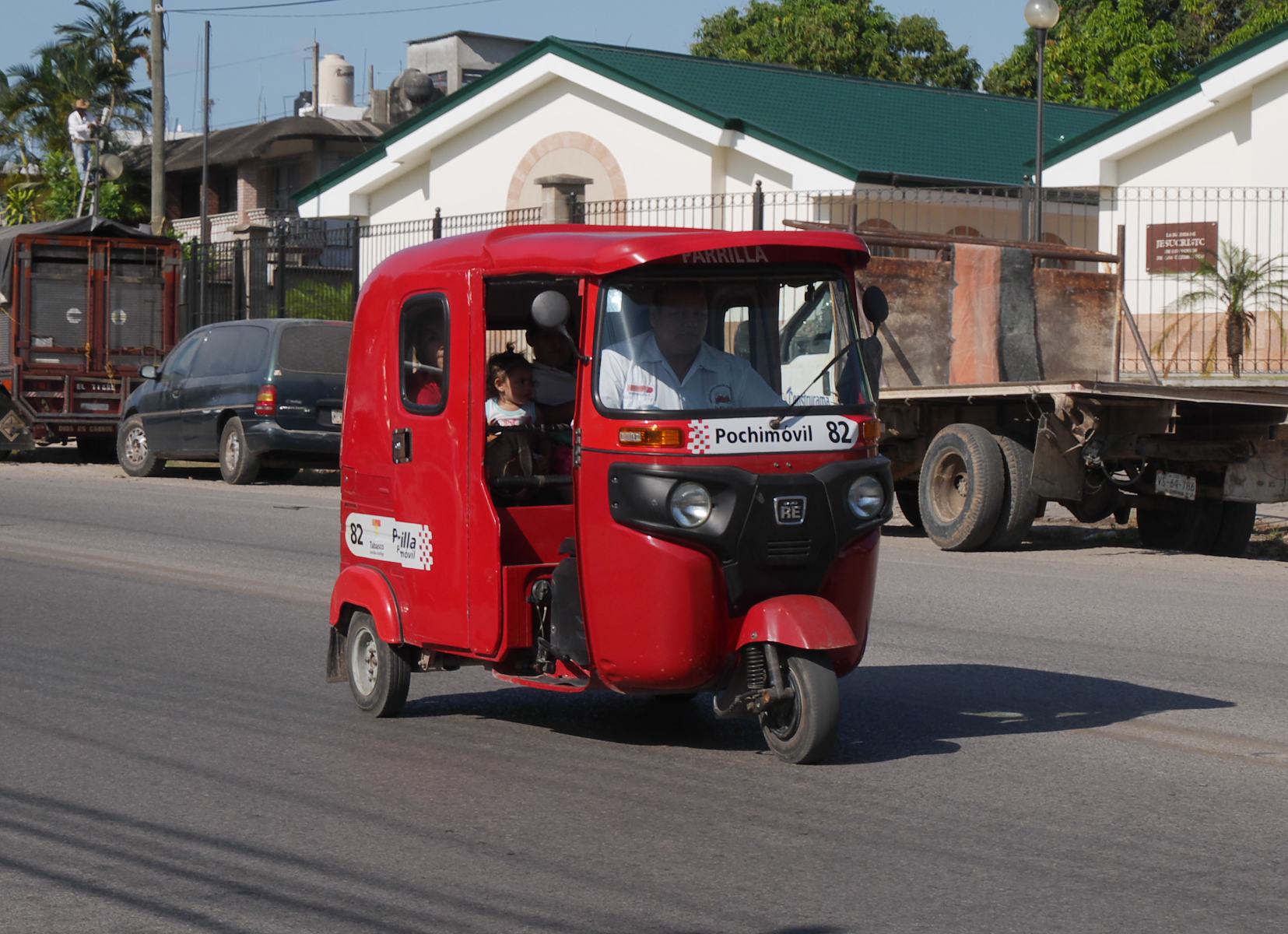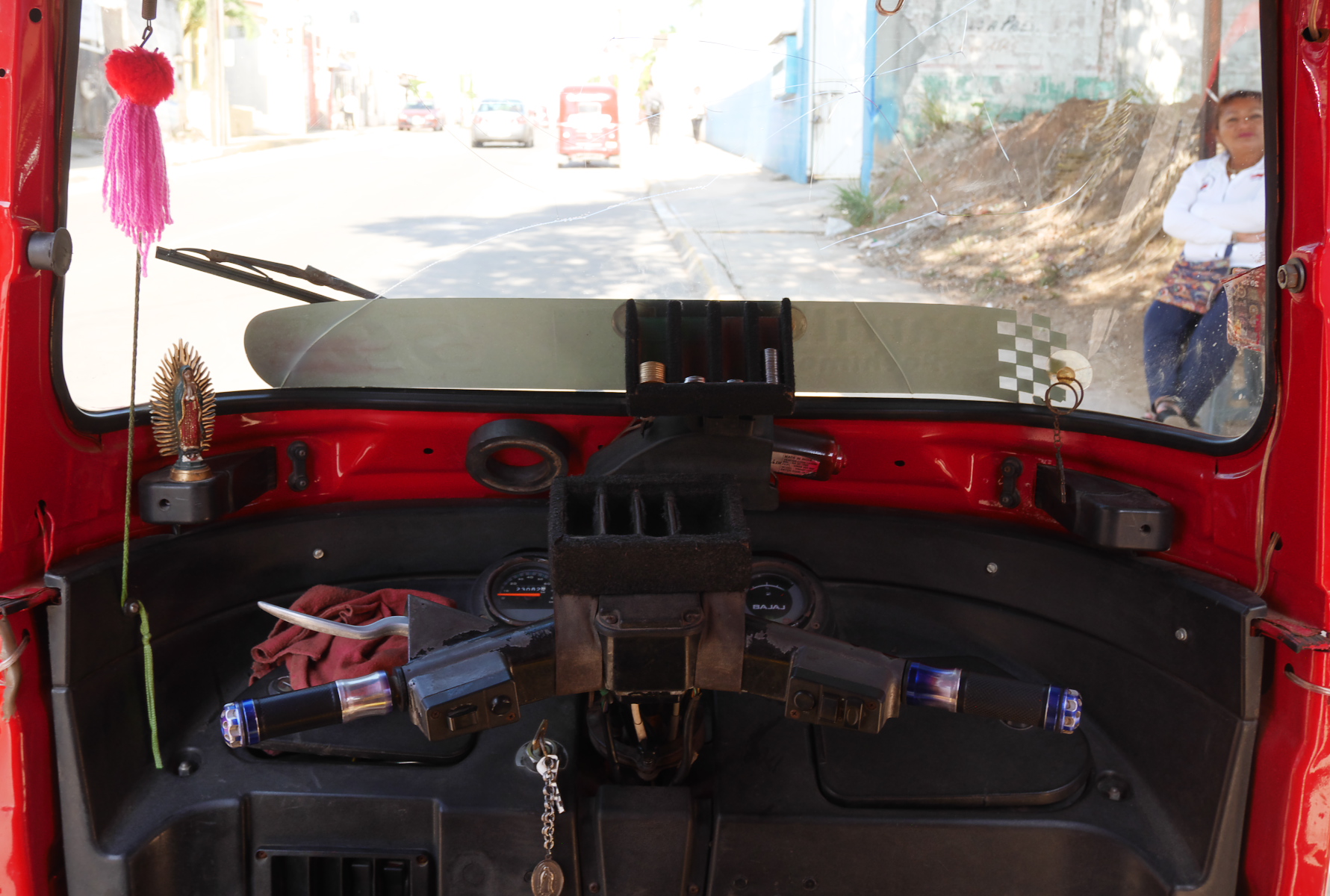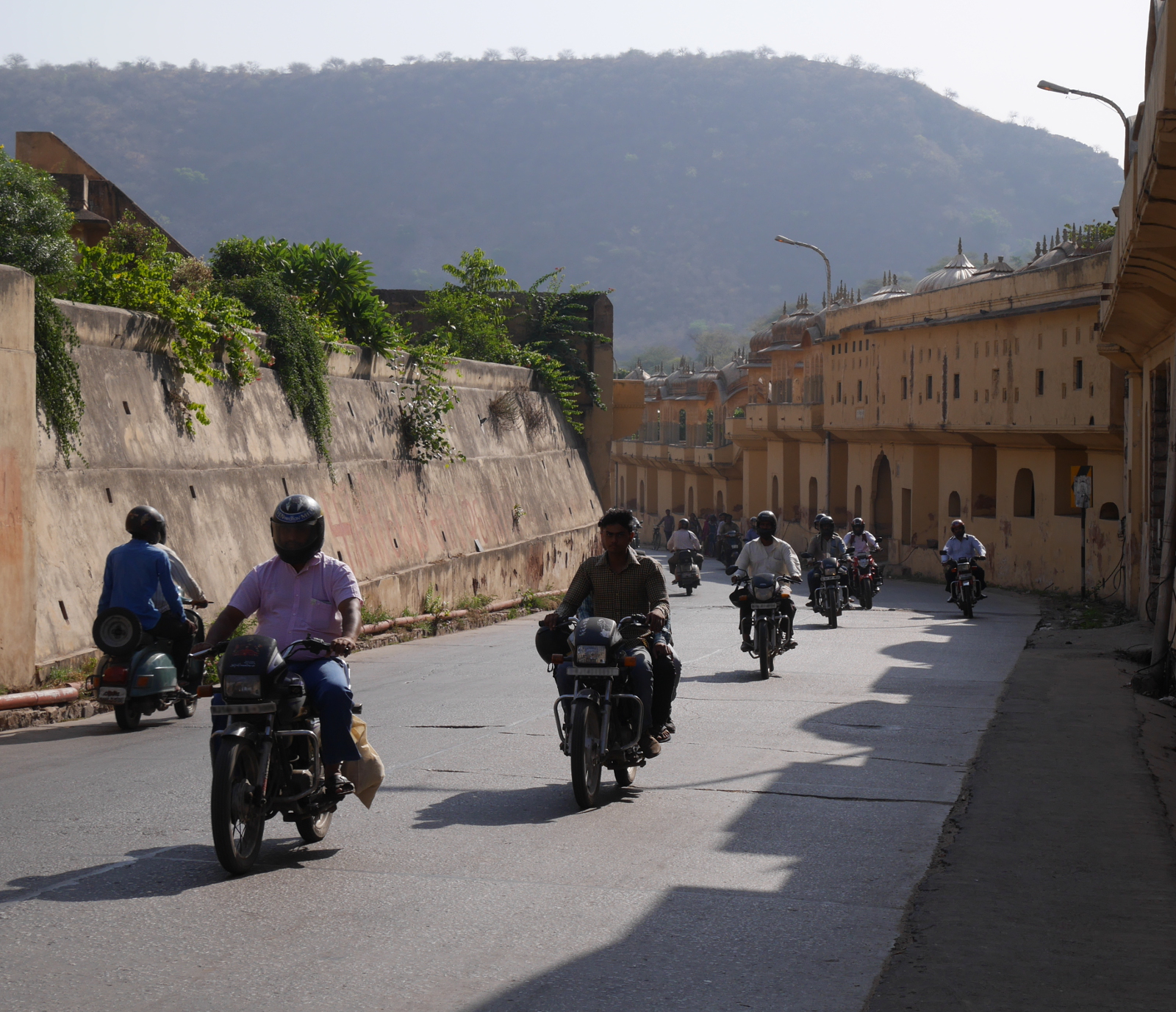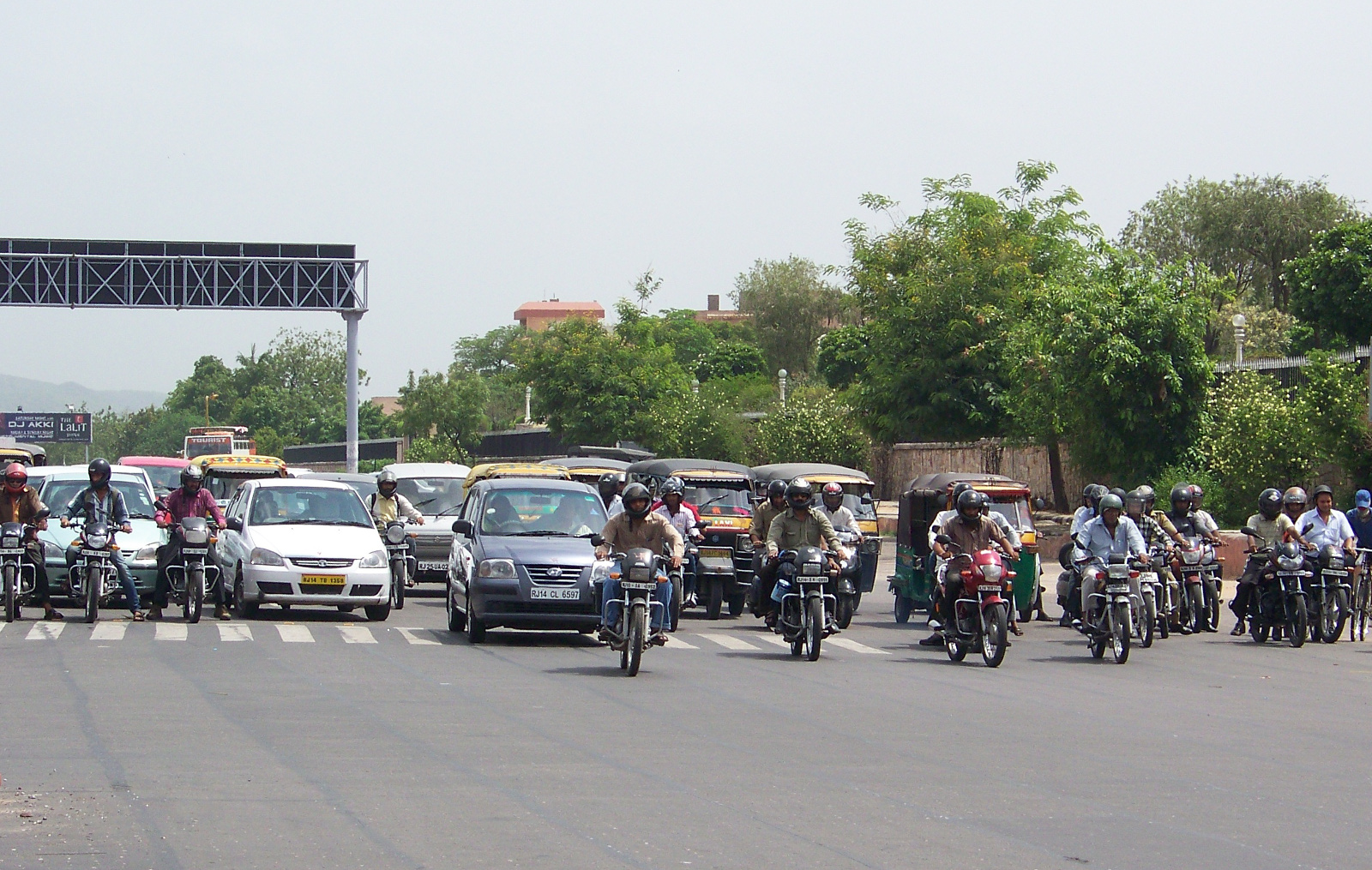Before visiting Jakarta three years ago, I read someplace that the Indonesian capital may be the largest city in the world without a metro railway. A couple of other cities could contest that claim, but Jakarta is certainly one of the biggest metro-less cities.
Instead of a metro railway, Jakarta has the Transjakarta Busway, a hybrid transportation technology that is effectively a bus metro. The buses run in their own lanes and stop at stations that can only be entered with a smartcard. The bus doors are high off the ground to meet the station platforms, so it is only possible to board the buses through the stations. There can still be quite a gap between bus and platform, more than on any metro I’ve ridden.
At its best, the Transjakarta Busway is faster and more efficient than regular buses, which are at the mercy of all the other traffic in a city. It was also much cheaper to build than a metro railway, because the buses run on existing roadways rather than purpose-built tunnels. At its worst, the busway may not offer much advantage over regular buses, because traffic doesn’t always stay out of the designated bus lanes.
Jakarta was the first place I saw a busway, but then when I went to Yogyakarta in south-central Java, I found a small busway system in that city as well. When I moved to Jaipur later that year, I saw what appeared to be the ruins of a rapid-transit bus system. On one of the roads on the western side of the city, buses ran in their own dedicated lanes, but the lanes were not always open, and at other times non-bus traffic infiltrated the lanes.
To return to Jakarta: there is a metro railway under construction in Jakarta, but it has yet to open. When it does, the Transjakarta Busway will probably continue to operate alongside it.
Indonesia has two other public transportation technologies that are worth mentioning: ojeks and becaks. Ojeks are motorcycle taxis. The passenger sits on the back of the motorcycle behind the driver. Thanks to their narrow profile, ojeks can weave through traffic. I understand that motorcycle taxis are common elsewhere in southeast Asia. It seems that they could be popular in India as well, but they have not caught on there for some reason—possibly because they would not be practical for women traveling alone.
The other distinctively Indonesian mode of public transit is the becak, a three-wheeled cycle-taxi. (The c in “becak” is said like ch in “change.”) Unlike the cycle-rickshaws of India or the trishaws of Malaysia, becaks have a passenger seat in the front, and the driver sits in the back. The use of becaks has fallen off considerably in recent decades, but they are still around, especially in touristy areas.

